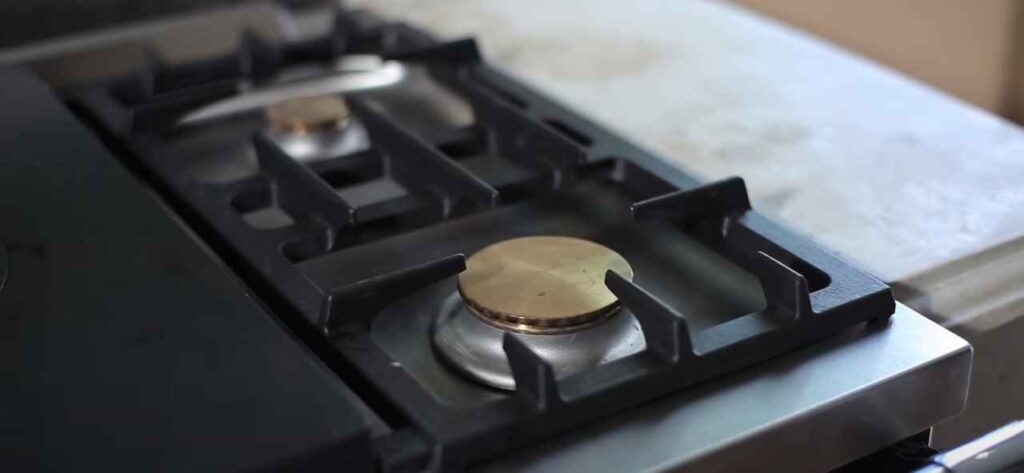
Get the help of our free tool to ascertain the monthly cost of your gas stove by simply adding the BTUs, Per Therm Cost, Your Monthly Usage and Number of Burners that you use.
Burners
Monthly Usage In Hours
BTU
Per Therm Cost ($)
Monthly cost in $:
0
It is very simple with the help of the calculator given below, all you need to do is just add the number of burners you are using for an hour and the calculator will provide the result of how much it would cost you monthly and yearly.
Here we have taken:
Moreover, if you find the calculator a little bit confusing (which would be strange) then you can also calculate the gas stove btu cost by yourself with this formula:
Cost to operate = usage (hours or load) x (BTUs/100,000) x price per therm
1 BTU = 0.293 watt hours
100,000 BTU = 1 therm
3,413 BTU = 1 kilowatt hour
BTU is an abbreviation for British Thermal Unit, which is a unit of heat energy. BTUs are the amount of energy needed to raise the temperature of one pound of liquid water by one degree Fahrenheit. In practice, BTUs show how much heat a device can generate. Gas burners on ranges and cooktops are branded with a BTU number, whereas components on electric ranges use watts to measure how hot they can become.
BTUs measure heat energy and are an excellent technique to estimate cooking power on a gas range or cooktop. The higher the BTUs, the more heat you can produce with that burner and, in many cases, the larger the flame. The amount of heat produced by a gas cooktop is likewise measured in BTUs, with most gas burners producing roughly 16,000 total BTUs. BTU ratings aren’t just used by cooking equipment; your air conditioner or gas heater may also use this unit of measurement.
The BTU value of a gas stove or cooktop should be easy to find. For a cooktop, you already own, consult the owner’s manual. If you’re looking for a new one, look at the product page’s specifications or the spec sheet put beside the appliance in-store. A sales representative should be able to supply you with BTU information on any model you’re interested in.
The higher the BTU capacity of a gas burner, the hotter it can reach; the hotter the burner, the faster it cooks. However, while BTUs measure heat generation, they do not always translate into improved cooking performance. Other elements come into play, such as heat transmission efficiency.
If your pan is not properly sized for the burner, the high BTUs can heat the room more than the contents of the pan (a common argument for induction cooktops, but that’s a topic for another post). For more efficient heating, some manufacturers promote burners that are specially constructed to direct all heat upward.
High BTU stoves have some drawbacks, including higher prices, higher gas consumption, increased ventilation requirements, and trouble reliably producing low heat.
While the high end of the burner power is often highlighted, a range’s capacity to generate low heat is equally, if not more, significant. Cooking and simmering on low heat might be difficult. For low-temperature cooking, some ranges “cycle” heat.
This means they alternate between low heat and going off, but the clicking can be irritating, and the heat is not constant. Manufacturers are addressing this issue, with many recently introducing low-BTU heat burners that provide greater uniformity.
A high BTU cooktop does not equal a professional chef. Be honest with yourself about your home cooking habits and requirements. Professional kitchens’ super-high BTUs are designed for high-speed and high-volume cooking, which is rarely the case at home, even when entertaining.
Yes, it’s good to have a single powerful burner to get the water boiling quickly, but flexibility is often more vital. Look for ranges with a collection of burners with different levels of power and consider which you’re apt to use most.
Is there a sweet spot for home cooks’ burner strength? On that point, the jury is yet out. One power burner (12,000 BTUs or greater) is more than enough for most users, especially when combined with two medium-strength burners and one low burner for simmering. If you frequently cook with intense heat, such as stir-frying or searing, you may wish to increase the wattage.
The good news is that stove manufacturers have heard the call for improved performance at lower temperatures, making it easier than ever to find an appliance that can do it all.